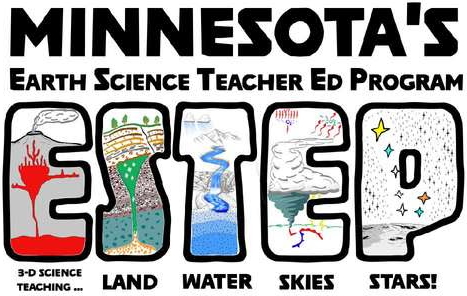Top > In the News... > ASP Develops a New Edition of "The Universe at Your Fingertips"
posted on 12:07 PM, January 10, 2012
The Astronomical Society of the Pacific has developed what looks to be an excellent resource for people working with students in a wide variety of topics related to astronomy. Elementary teachers...check this out, too!
The Universe at Your Fingertips 2.0
Here is their description. This seems like $30 well spent!!
The Universe at Your Fingertips 2.0:
A DVD with 133 Activities and Many Resources about Basic Ideas in Space (and Earth) Science
The nonprofit Astronomical Society of the Pacific announces the publication of an educational DVD-ROM that contains:
* 133 field-tested hands-on activities, from programs and projects around the US
* 17 topical guides to the best sources of information in print and on the web
* 52 background articles on astronomy and education
* 55 of the best introductory astronomy images with detailed captions (and a guide to finding hundreds more)
* 12 short videos with instructions for doing some of the most often-used activities.
All written materials are presented in easy-to-print PDF format.
Activities come with full instructions and class/audience handouts. Most can be used in both classroom settings and in informal programs such as museums and nature centers.
The DVD-ROM is available through the Society's on-line AstroShop.
To see the full table of contents and to order the disk, please go to:
http://astrosociety.org/uayf/
This disk is an expanded and completely updated version of the print guide to astronomy activities and resources published by the Society since 1995 and in use in many thousands of K-12 classrooms, teacher training programs, college labs, planetariums, museums, parks, and amateur astronomy clubs around the world. The new edition includes dozens of new activities and resources, including coverage
of such recent topics as the search for planets around other stars, why Pluto got kicked out of the planet club, and how to respond to the Internet scare of the world ending in 2012 as a result of astronomical events.
The 133 activities, ranging from short discussions to sequences that take several hours, cover a host of topics that are the staple of national and state science frameworks and standards. Themes include scales of size, distance, and time; comparing planets; understanding basic sky phenomena, such as phases of the Moon, the daily motion of the Sun, seasons on Earth and other worlds; the multi-cultural origins of the constellations; the lives of stars; the expansion of the universe; and ways of including astronomy learning with other fields such as geography, math, writing, and history.
__________________________________________________
Founded in 1889 on the Pacific Coast of the U.S., today the Astronomical Society of Pacific is an international scientific and educational organization dedicated to improving scientific literacy through astronomy.
The Universe at Your Fingertips 2.0
Here is their description. This seems like $30 well spent!!
The Universe at Your Fingertips 2.0:
A DVD with 133 Activities and Many Resources about Basic Ideas in Space (and Earth) Science
The nonprofit Astronomical Society of the Pacific announces the publication of an educational DVD-ROM that contains:
* 133 field-tested hands-on activities, from programs and projects around the US
* 17 topical guides to the best sources of information in print and on the web
* 52 background articles on astronomy and education
* 55 of the best introductory astronomy images with detailed captions (and a guide to finding hundreds more)
* 12 short videos with instructions for doing some of the most often-used activities.
All written materials are presented in easy-to-print PDF format.
Activities come with full instructions and class/audience handouts. Most can be used in both classroom settings and in informal programs such as museums and nature centers.
The DVD-ROM is available through the Society's on-line AstroShop.
To see the full table of contents and to order the disk, please go to:
http://astrosociety.org/uayf/
This disk is an expanded and completely updated version of the print guide to astronomy activities and resources published by the Society since 1995 and in use in many thousands of K-12 classrooms, teacher training programs, college labs, planetariums, museums, parks, and amateur astronomy clubs around the world. The new edition includes dozens of new activities and resources, including coverage
of such recent topics as the search for planets around other stars, why Pluto got kicked out of the planet club, and how to respond to the Internet scare of the world ending in 2012 as a result of astronomical events.
The 133 activities, ranging from short discussions to sequences that take several hours, cover a host of topics that are the staple of national and state science frameworks and standards. Themes include scales of size, distance, and time; comparing planets; understanding basic sky phenomena, such as phases of the Moon, the daily motion of the Sun, seasons on Earth and other worlds; the multi-cultural origins of the constellations; the lives of stars; the expansion of the universe; and ways of including astronomy learning with other fields such as geography, math, writing, and history.
__________________________________________________
Founded in 1889 on the Pacific Coast of the U.S., today the Astronomical Society of Pacific is an international scientific and educational organization dedicated to improving scientific literacy through astronomy.









 Minnesota science teachers should know about:
Minnesota science teachers should know about: